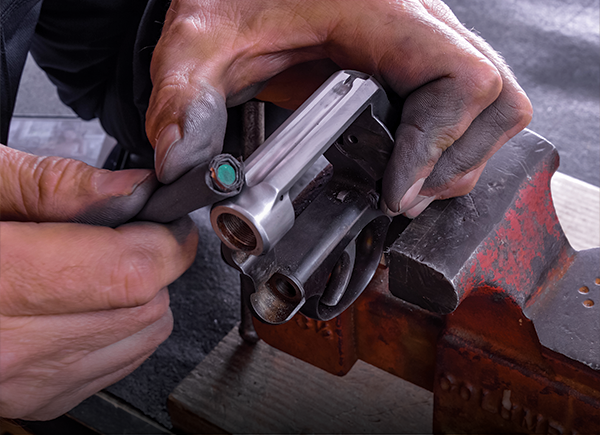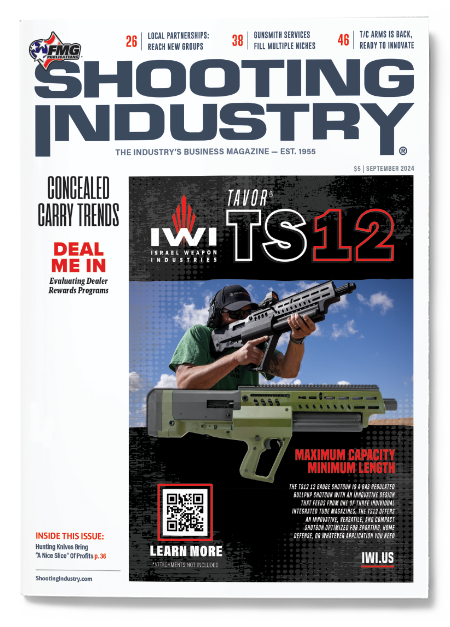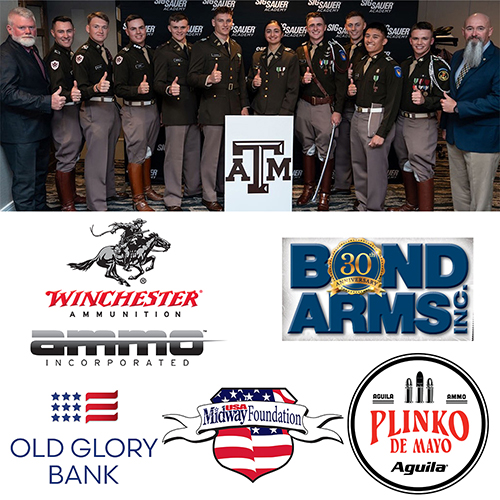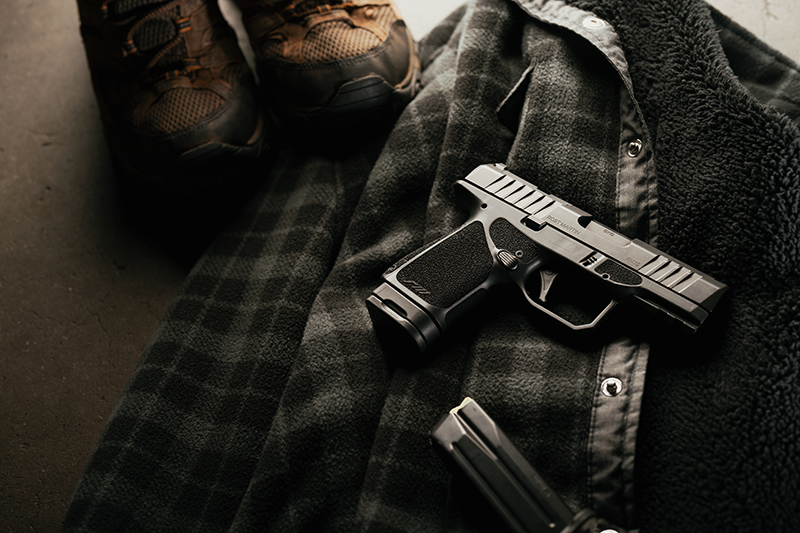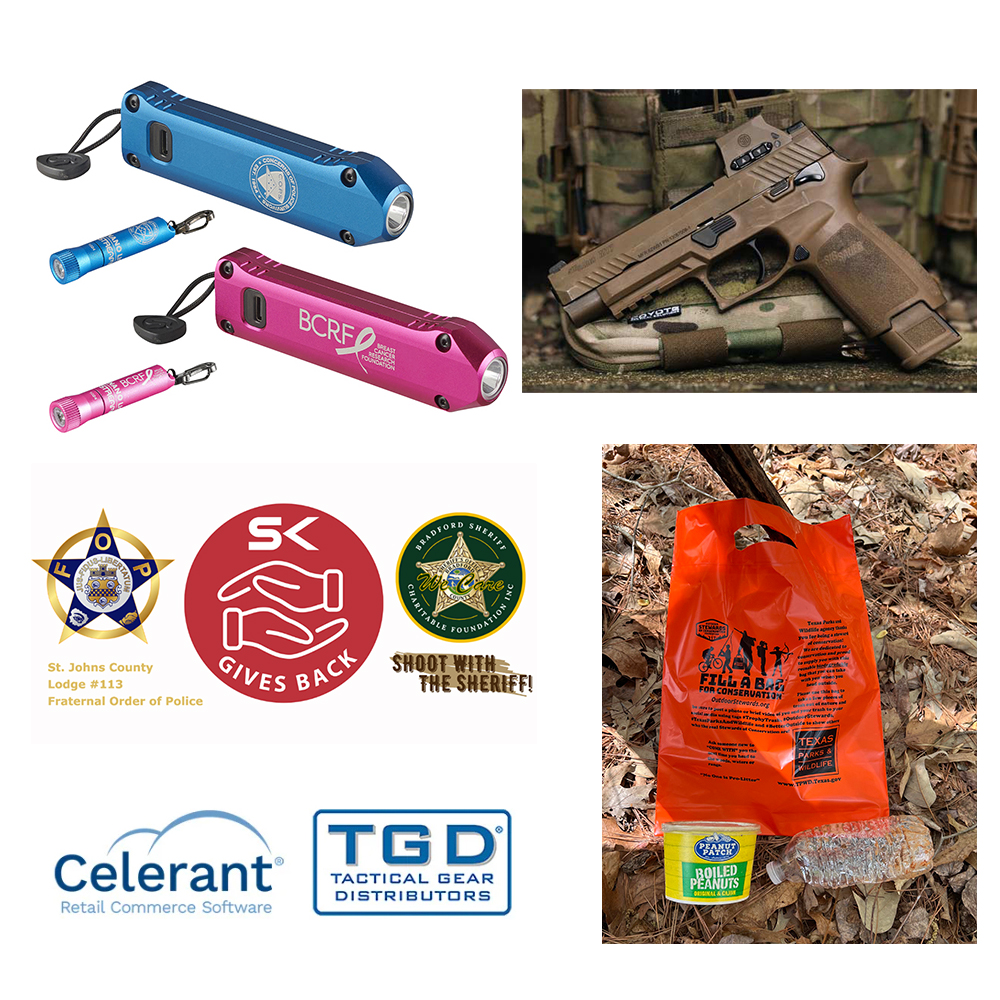Turning Lemons Into Loyalty
Gunsmith Services Fill Multiple Niches
When a customer buys a lemon firearm, he or she almost always blames the retailer, not the manufacturer. When it happens, a professional gunsmith can salvage the retailer’s relationship with the customer.
Garrison Burge, gunsmith at Beech Grove Firearms in Indianapolis, said a gunsmith is essential to a gun shop’s success because a gunsmith’s responsiveness preserves customer loyalty.
“When you get unsatisfactory food at a restaurant, who gets yelled at, the cook or the server? It’s never the chef,” Burge posed. “When a customer’s firearm is not right, they don’t call up Savage or Ruger or whoever made it. They go to the gun dealer who sold it to them.”
Time Is Money
A shop can send a lemon back to the manufacturer, but getting it back will take time. A resident gunsmith or a gunsmith on-call can repair the gun on warranty and return it to the customer in a fraction of the time.
“Some people don’t want to wait six weeks to 10 months to get their gun back,” Burge said. “Ten months is the longest a manufacturer had a firearm out on a warranty. If there’s been a recall or if a firearm broke within a few months of purchase, most of the time a manufacturer doesn’t have a problem if you have an in-house gunsmith sending a part to the gunsmith to repair the firearm. They will get the part to us in three to five business days. It takes me an hour to repair it. That’s five days compared to the customer sending it to the manufacturer and not seeing their gun for six weeks.”
Unfortunately, the most troublesome guns are inexpensive entry-level guns. Those are also high-volume sellers. Retailers don’t test-fire new guns, so they can’t cull lemons before selling them. Being able to service them is one way a resident gunsmith can turn a negative situation into a positive.
Offer What The Competition Doesn’t
Another positive is servicing guns from competing retailers who don’t or can’t employ their own smith.
“There’s a shop about six miles south of us,” Burge shared. “They have an indoor gun range, and with an indoor gun range, there are times when people are going to experience problems with guns when they’re shooting. That shop does not have a gunsmith. There are numerous times a week I get a customer from there. Their range officer sent them here to have their firearm repaired. From a business standpoint, I’m very happy they do not have one.”
Specialists Needed
Browning built roughly 2 million Auto-5 semi-autos from about 1900–1998. Collectors value them highly, and a great many Auto-5s are still in service, but Browning does not support the Auto-5 anymore. There’s still a lot of money to be made servicing these classics, be it general maintenance, repair or full restoration, but a local gun store isn’t equipped to do it.
Art Isaacson, founder of Art’s Gun Shop in Hillsboro, Mo., fills the void. If a customer takes the beat-up Sweet Sixteen or field-worn Superposed they inherited from their grandfather to you — chances are good you’ll want to send it to Art’s.
“If you want to restore an old Winchester, you call Doug Turnbull,” he stated. “If you want to restore a Browning, you call me.”
As with classic muscle cars among baby boomers, hunters and shooters of that generation have a nostalgic fondness for the firearms they remember from their youth. This demographic has sufficient disposal income to devote to restoring those guns. If it’s a higher-grade model, there’s also sufficient financial incentive for an owner to restore an old Browning.
“I did contract work for Browning for 25 years,” Isaacson said. “For 25 years I was the guy who blued 90% of A-5s, Superposed and Citoris. That’s where my paychecks came from. I didn’t leave them until I knew had enough to carry me through. My customers pay me a lot more than Browning ever did.”
Experience taught him to stay in his lane. He works almost exclusively on Brownings.
“I need to specialize in one or two models and work on the better stuff,” Isaacson noted. “It takes a lot of years to get there, and it means keeping parts in stock. I don’t know anything about Savages. I just do what I was trained on. I have the parts and the know-how to do them.”
It’s an economy of scale. Profit margins are slim in gunsmithing. If a generalist must replace a part in a random firearm, ordering the part costs the customer extra money and extends the gun’s time out of service. A specialist like Isaacson will already have parts on hand for firearms he handles in bulk. This streamlines his workflow and allows him to complete jobs faster.
“If you lose a part for an oddball gun, you will pay a lot of money ordering a new part,” Isaacson said. “If you lose a part to a Browning Citori, I’ve got a box full of them.”
A shop like Art’s or Turnbull’s requires micro-specialists who concentrate on the vital steps of gun restoration. Isaacson says there aren’t enough micro-specialists to keep up with demand.
“There’s a shortage of wood fitters,” Isaacson informed. “If somebody wants to learn to fit wood, he could be a busy guy. If he’s a good wood finisher, and especially if he’s a good engraver, he can take in a lot of work.”
General Specialist
Collectors acquire more than just Browning and Winchester, and they need gunsmiths to service and restore obscure and out-of-production models. Don Keller, owner of The Trade Blanket in Paron, Ark., has carved out a niche market servicing guns beyond the scope of ordinary smiths.
“I restore antique firearms made primarily before 1920,” Keller said. “I do all kinds of work, but the majority of it is restoring older Winchesters, Marlins, L.C. Smith, Parker and things along those lines.”
Much of Keller’s restoration work comes from Southern states where high humidity contributes to rust and wood degradation. Vintage firearms from the South tend to be in rougher condition than those from more arid environments.
“Historically, people in the South, where you’ve got high humidity — especially during the black powder cartridge era — didn’t take care of their guns very well,” Keller explained. “Most of those guns are not in shootable condition, but they can be restored to be fired.”
Keller runs a low-volume operation. He had six guns in the works in June. Of course, he does a lot of conventional jobs are typical in the retail environment. Most of his business comes by word of mouth, but he also gets referrals from retailers in central Arkansas, like Fort Thompson Sporting Goods and Don’s Weaponry, both of which have been featured in these pages.
“I put 21 red dot sights on shotguns for turkey hunters this season,” he said. “All of those came from referrals from Fort Thompson’s. I’ve got more work than I want to do right now. I don’t really advertise. I just give them a box of business cards every three or four months.”
Keller also modifies and modernizes vintage firearms. Even if these projects devalue a classic firearm dramatically, they enable them to continue to be useful.
“I’ve got an L.C. Smith side-by-side I’m converting from 16 gauge to 28 gauge,” he shared. “My barrel liner guy in Tennessee makes me a 28-gauge barrel liner, and then I turn it down to fit inside dimension of a 16 gauge.”
That’s borderline blasphemous. Why?
“L.C. Smith only made one 28 gauge,” Keller said. “Not one model, but one gun. Period. This will be number two. It’s a Damascus barrel, so you can’t really shoot modern 16-gauge shells in it, but with barrel liners in it, you can shoot modern 28-gauge shells.”
Guns are made to be used after all, and owners will obviously pay to keep them in service. This why a gun shop owner should have a gunsmith in his back pocket — if not in his back room.

